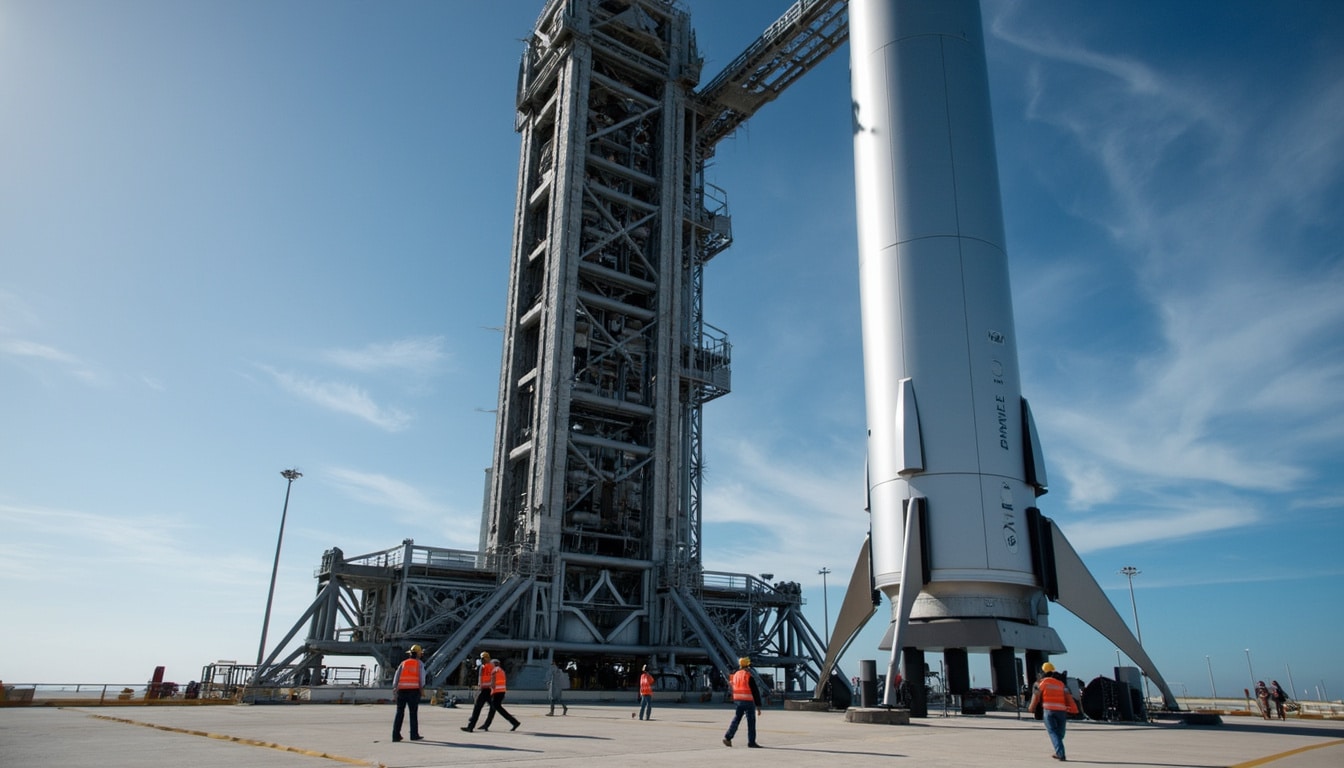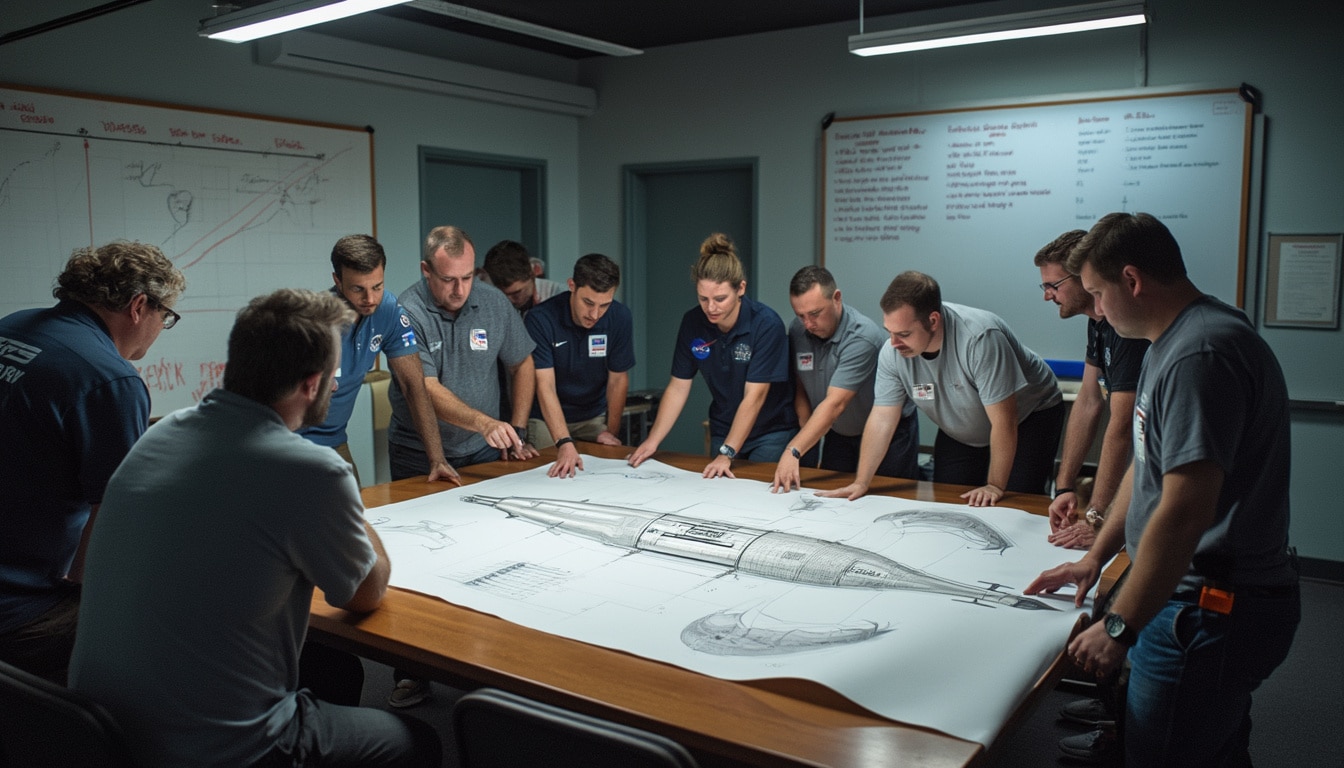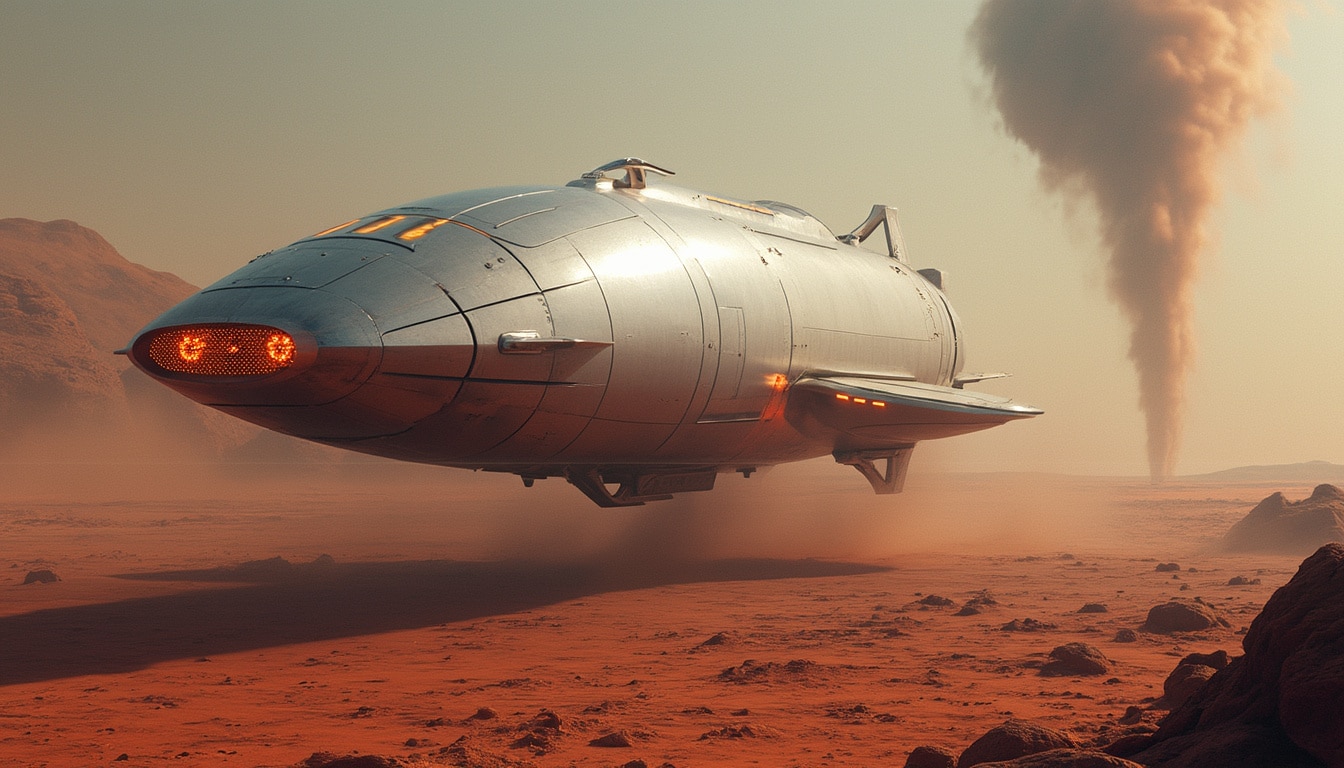SpaceX is on the brink of a significant milestone in its journey toward launching its Starship vehicle, thanks to a recent update from the Federal Aviation Administration (FAA). This license update brings exciting prospects for the company’s upcoming Flight 9 mission, which follows two previous launches that encountered challenges. With plans to perform up to 25 launches a year from its Starbase facility, the company is gearing up for a new era of exploration.
Elon Musk’s aerospace firm has made progress in overcoming regulatory hurdles, reinforced by successful tests and environmental assessments regarding upcoming flight paths. Amidst a backdrop of intense public and governmental scrutiny over its safety measures and impact on airspace, SpaceX remains undaunted. A mix of optimism and caution surrounds the anticipation for Starship’s next ascension, all while other companies like NASA, Blue Origin, and Rocket Lab continue to shape the evolving landscape of commercial spaceflight.
The FAA’s License Update: A Game Changer for SpaceX
The recent FAA license update is pivotal for SpaceX as it paves the way for enhanced operational capacity from its launch site in Texas. Initially limited to a lower annual launch quota, the FAA’s revised authorization allows up to 25 launches annually. This is a significant increase that embodies the regulatory body’s recognition of SpaceX’s potential for future space endeavors.

Understanding the Regulatory Landscape
The FAA’s update addresses the dual aspects of safety and environmental impact. Recent mishaps during test flights, specifically the failures observed in Flights 7 and 8, heighten the agency’s vigilance over future launches. These incidents, termed “energetic events,” highlighted potential weaknesses within the Starship’s design that necessitated scrutinous evaluations. The FAA has stipulated that a successful resolution of the Flight 8 investigation is mandatory before any subsequent launches can take place. This meticulous approach ensures that both the safety of the vehicles and the surrounding environment are prioritized, reflecting a balance between innovation and accountability.
Moreover, the increased operational ceiling is indicative of the agency’s faith in SpaceX’s capabilities. As part of this adjustment, environmental assessments have determined necessary airspace closures that affect a wide swath of Caribbean region, including CNN. These strategic alterations aim to minimize risks associated with potential falling debris during launches.
Flight 9 Preparations and Upcoming Tests
As Flight 9 approaches, SpaceX has meticulously crafted a series of preparations aimed at optimizing launch conditions and performance capabilities. The successful static fire test carried out on the Starship upper stage on May 13 is a vital precursor to what lies ahead. This test demonstrated the rocket’s ability to sustain functioning engines under maximum operational capacity, solidifying SpaceX’s confidence as it aligns itself for its next major test.
The company is racing against the clock to meet the anticipated launch window, with schedules indicating a possible lift-off as soon as May 22. Elon Musk’s proactive communication about the flight plans through social media platforms signals an effort to keep the public and stakeholders engaged. Projections of launch trajectories, safety measures, and potential emergencies have been disseminated, enriching the public discourse surrounding the mission.
The Implications of Failure: Lessons from Previous Flights
The experiences and setbacks from Flights 7 and 8 serve as crucial lessons for both SpaceX and the wider aerospace community. Each incident provided invaluable data that propelled not just SpaceX’s internal evaluations but also guided regulatory bodies in establishing safety protocols. The FAA’s regulations are tightening not merely in response to these failures but as a means of fortifying the aviation landscape against future challenges.

Analyzing the Energetic Events
The term “energetic event” has gained notoriety following the Flight 8 mishap, where unexpected engine failures led to an uncontrollable descent. This situation prompted a reevaluation of design aspects within the Starship propulsion system. The analysis revealed harmonic responses that exceeded anticipated thresholds, thereby highlighting potential risks inherent in rapid flight maneuvers. These findings, combined with initial data tracing back to Flight 7, culminated in a more rigorous examination of propulsion mechanics.
SpaceX is expected to address these flaws head-on as it ventures toward its upcoming launch. The emphasis on detailed analyses influences how future missions will be structured, placing a premium on safety without suppressing the spirit of innovation that characterizes the firm’s ethos.
The Broader Impact of Starship’s Success
The successful launch of Flight 9 could herald a new era for SpaceX, solidifying its place among titans of space travel. Firms such as Boeing and Northrop Grumman are observing closely, as successful outcomes set benchmarks that could reshape expectations for commercial space endeavors. The ramifications extend beyond technology as the Starship represents significant possibilities for interplanetary exploration. If successful, it could mark strides toward goals entrenched within SpaceX’s vision for manned Mars missions.
Collaboration Opportunities in Space Exploration
The space industry sees increasing collaborations between major players to share knowledge, resources, and operational benchmarks. While SpaceX efficiently conducts its trajectories for upcoming flights, collaborations with regulatory bodies and established companies like Boeing and Aerojet Rocketdyne enhance the overall understanding of risks and innovations within space travel. The orchestration among these giants amplifies the capacity for what can be achieved in deep space exploration.
NASA’s Role in Supporting SpaceX
NASA plays a pivotal role in fostering industry partnerships and aligning efforts that propel the commercial spaceflight sector forward. As the landscape evolves, agencies such as NASA elucidate policies that nurture the synergies among companies. They continue to observe SpaceX’s trajectories critically and contribute their expertise to enhance safety protocols across the board. These efforts extend not only to operational facets but also delve into technological innovations that could streamline missions.
The Emergence of Private Aerospace Firms
As the competition heats up, new players like Blue Origin and Virgin Galactic join established firms, redefining the landscape of space exploration. Innovation is entering a new threshold with advancements from diversified companies challenging age-old perceptions within the industry. Each launch contributes to a collective dataset that spans propulsion techniques, environmental responsibilities, and risk analysis, promising to elevate analytic responses in similar future endeavors.
The Future of Space Exploration
The quest for Mars and beyond is fraught with challenges that demand persistent innovation and resilience. The future hinges on the success of missions like SpaceX’s ongoing developments with Starship. This timeline is heavily laden with both promises and pitfalls, as each venture unveils fresh discoveries while also confronting inevitable setbacks.

Public Perception and Engagement
Public interest in space exploration amplifies with every launch, and firms like SpaceX capitalize on this sentiment. Promoting outreach via social platforms ensures engagement among younger audiences poised to inherit the legacy left by present endeavors. Educational initiatives and robust social media campaigns foster a sense of optimism and enthusiasm toward human exploration beyond Earth.
Looking Ahead: Challenges and Opportunities
Every flight serves as a stepping stone to a broader vision that entails establishing humanity’s presence on other celestial bodies. The industry faces challenges regarding environmental impact and regulatory compliance, but these hurdles are countered by opportunities that tap into technologies previously regarded as impossible. Companies are competing not only for leadership in the sky but for the legacy that will resonate through generations.
| Flight Number | Launch Date | Status | Notable Events |
|---|---|---|---|
| Flight 1 | May 2020 | Success | First test launch of Starship |
| Flight 2 | December 2020 | Success | High-altitude flight test |
| Flight 3 | March 2021 | Failure | Landing anomaly |
| Flight 4 | July 2021 | Success | Nearby landing on target |
| Flight 8 | March 2024 | Failure | Energetic event during ascent |




Leave a Reply